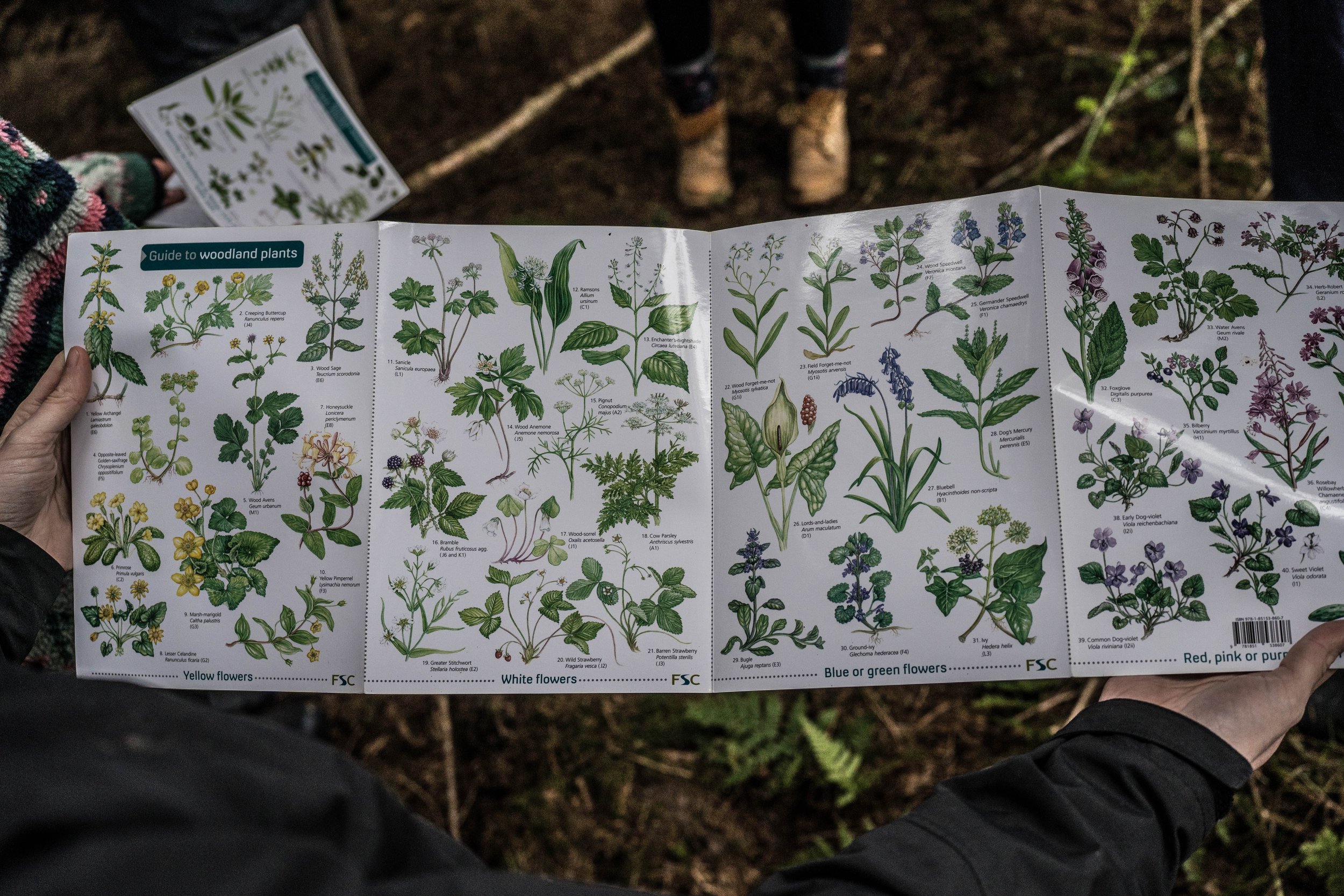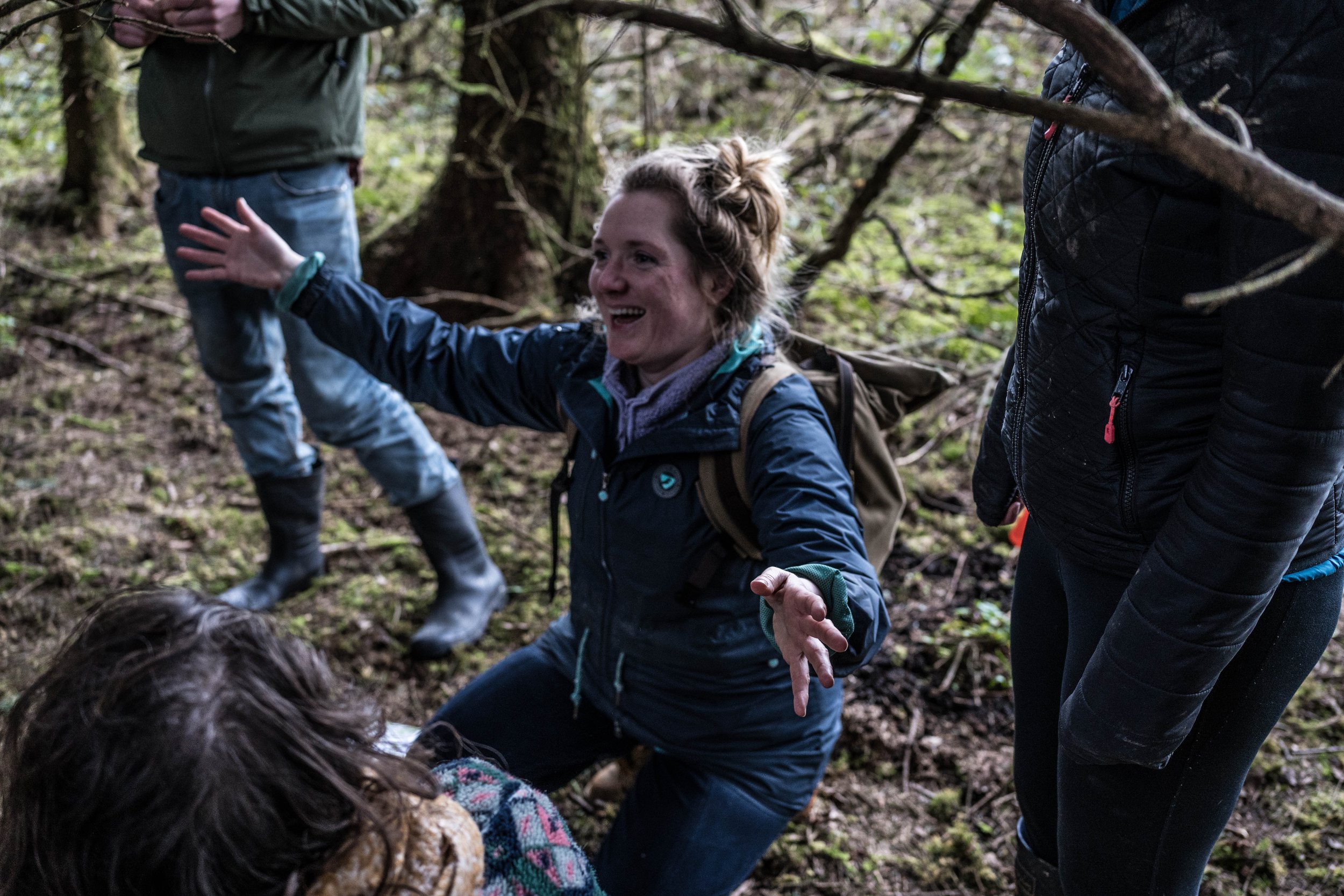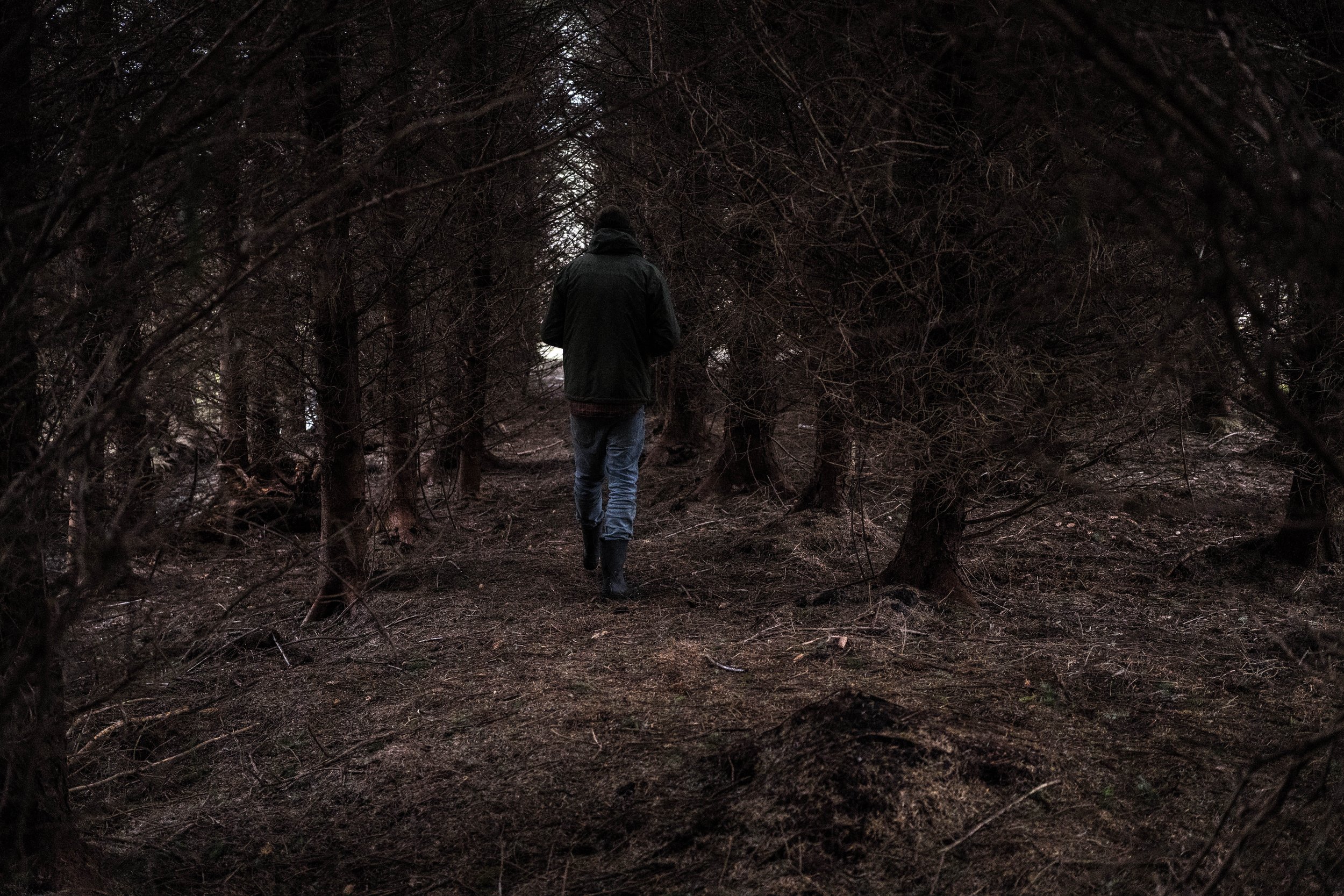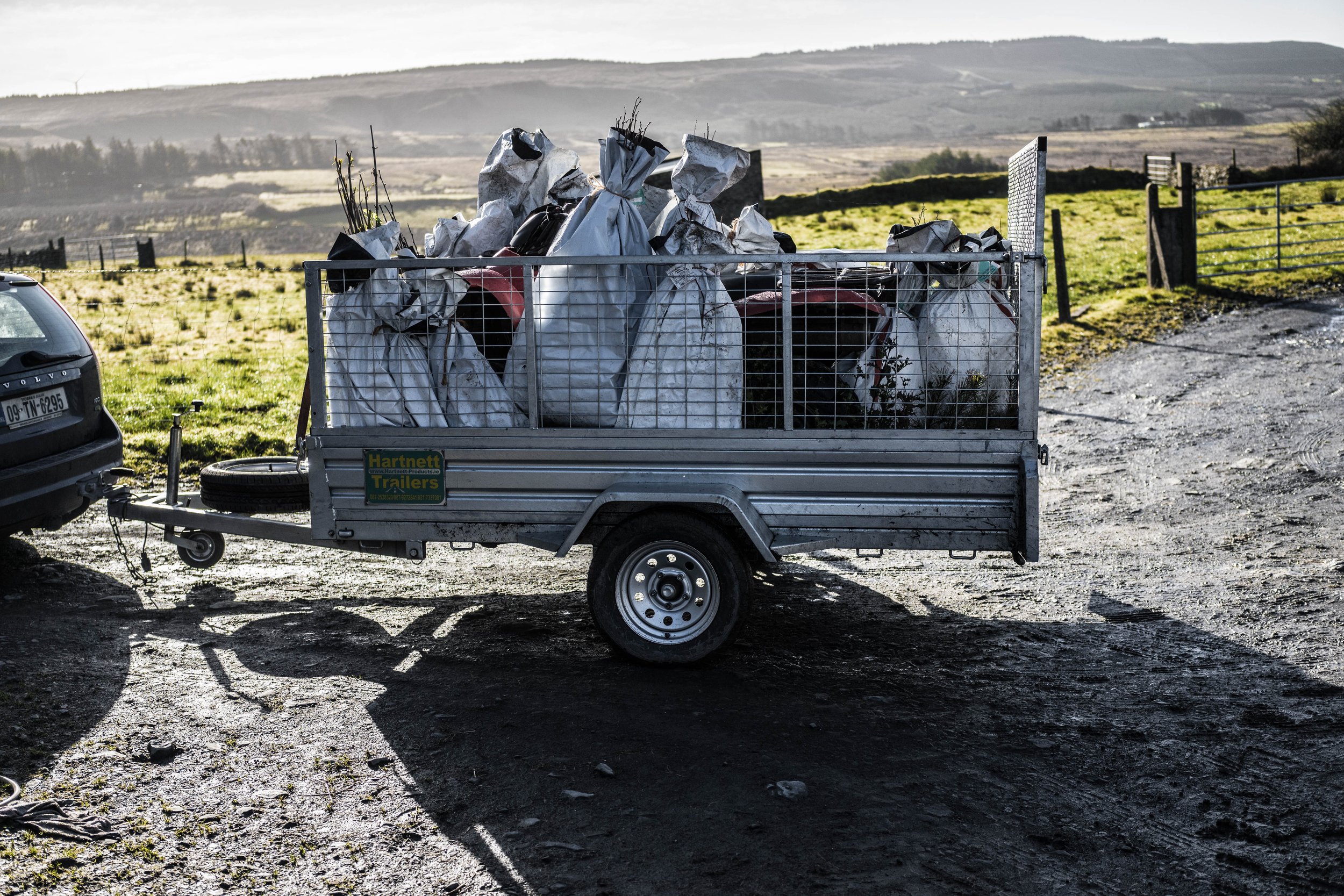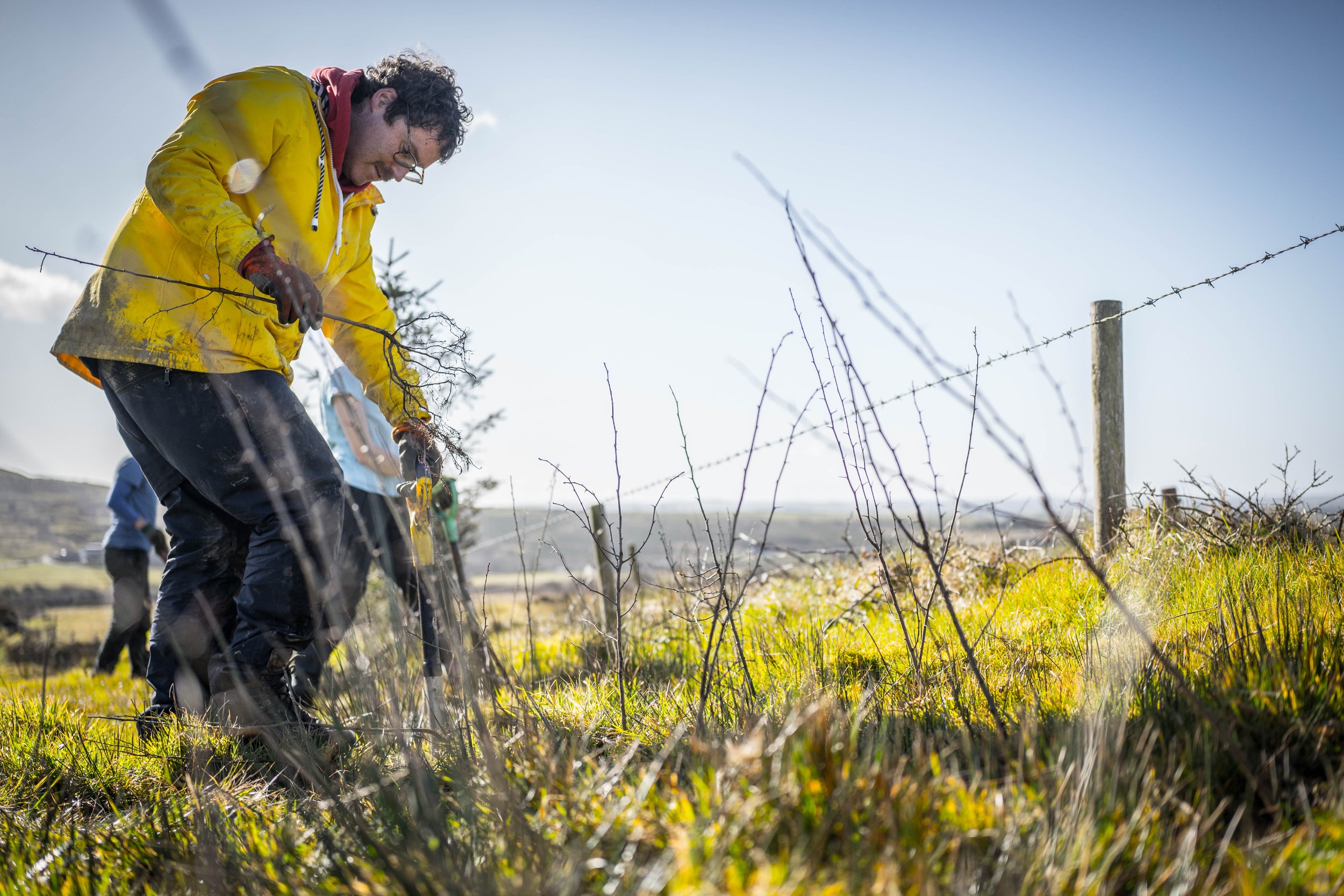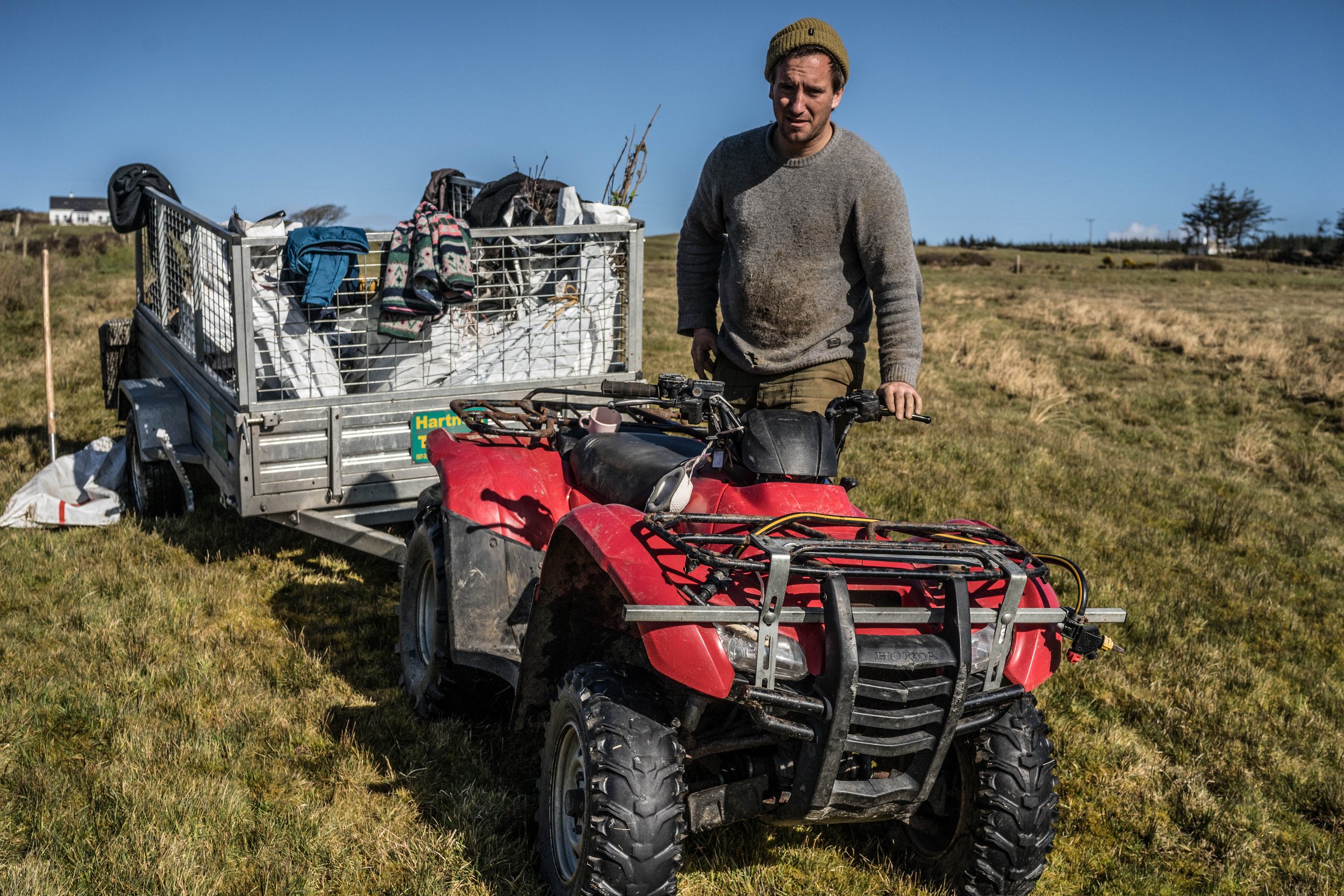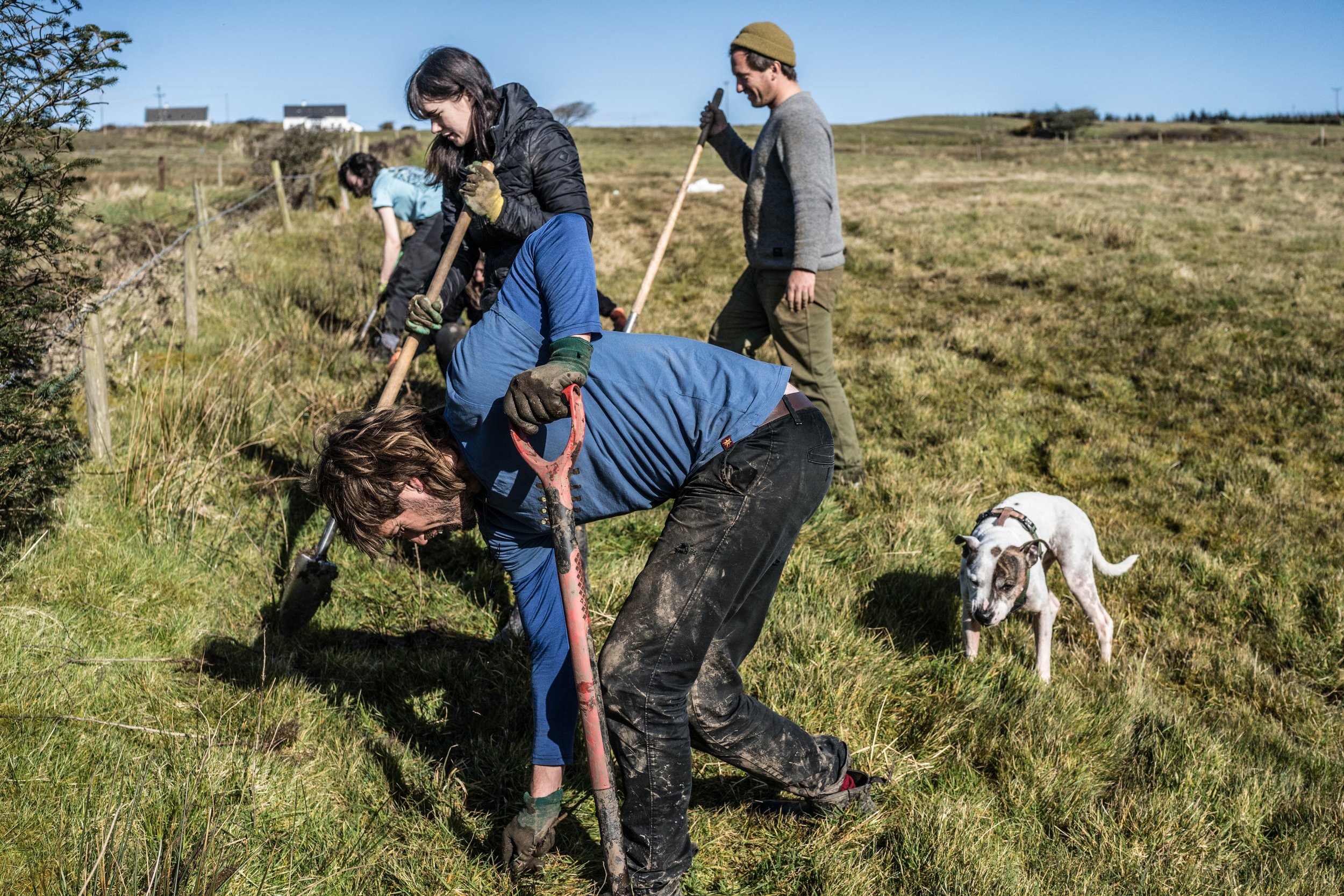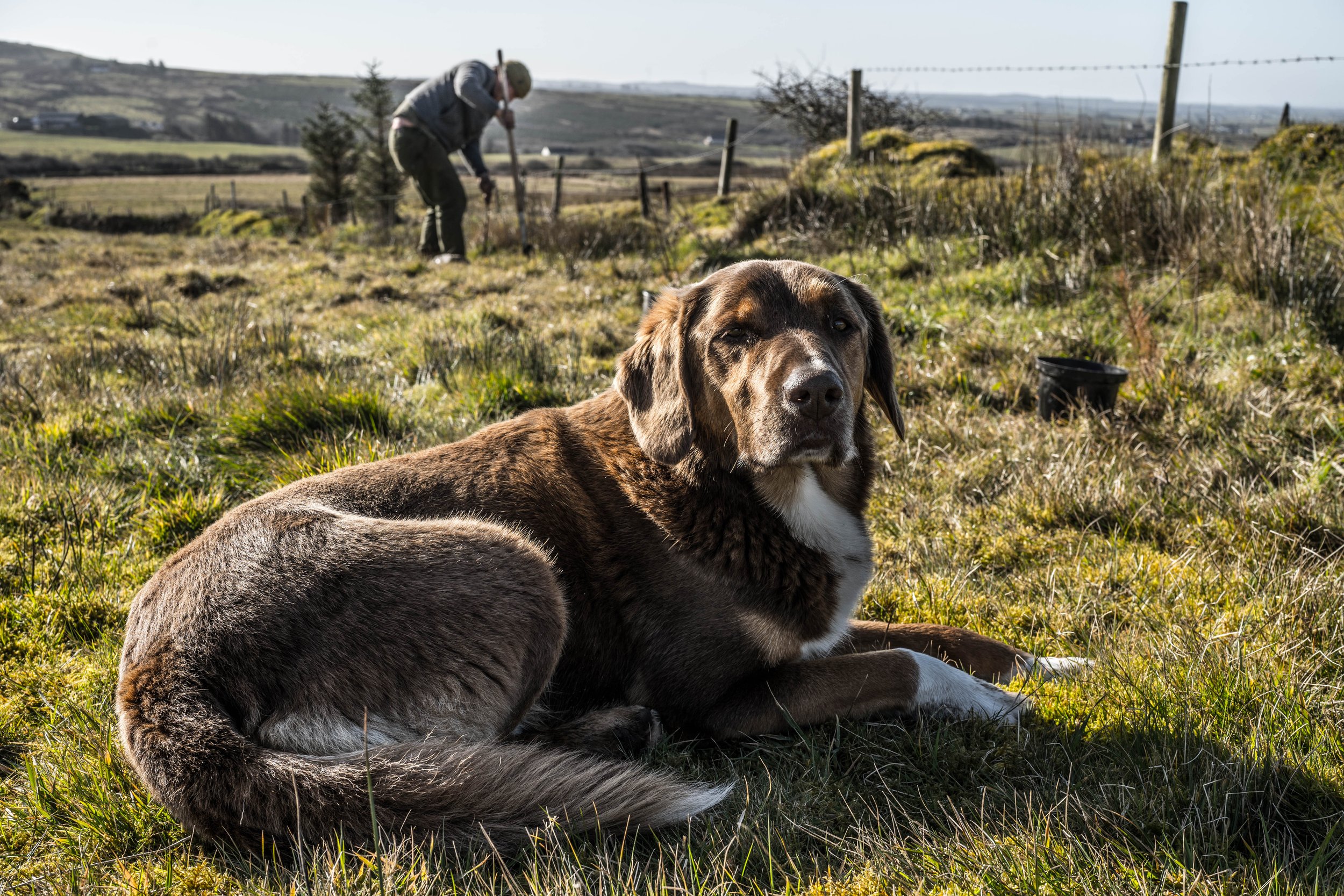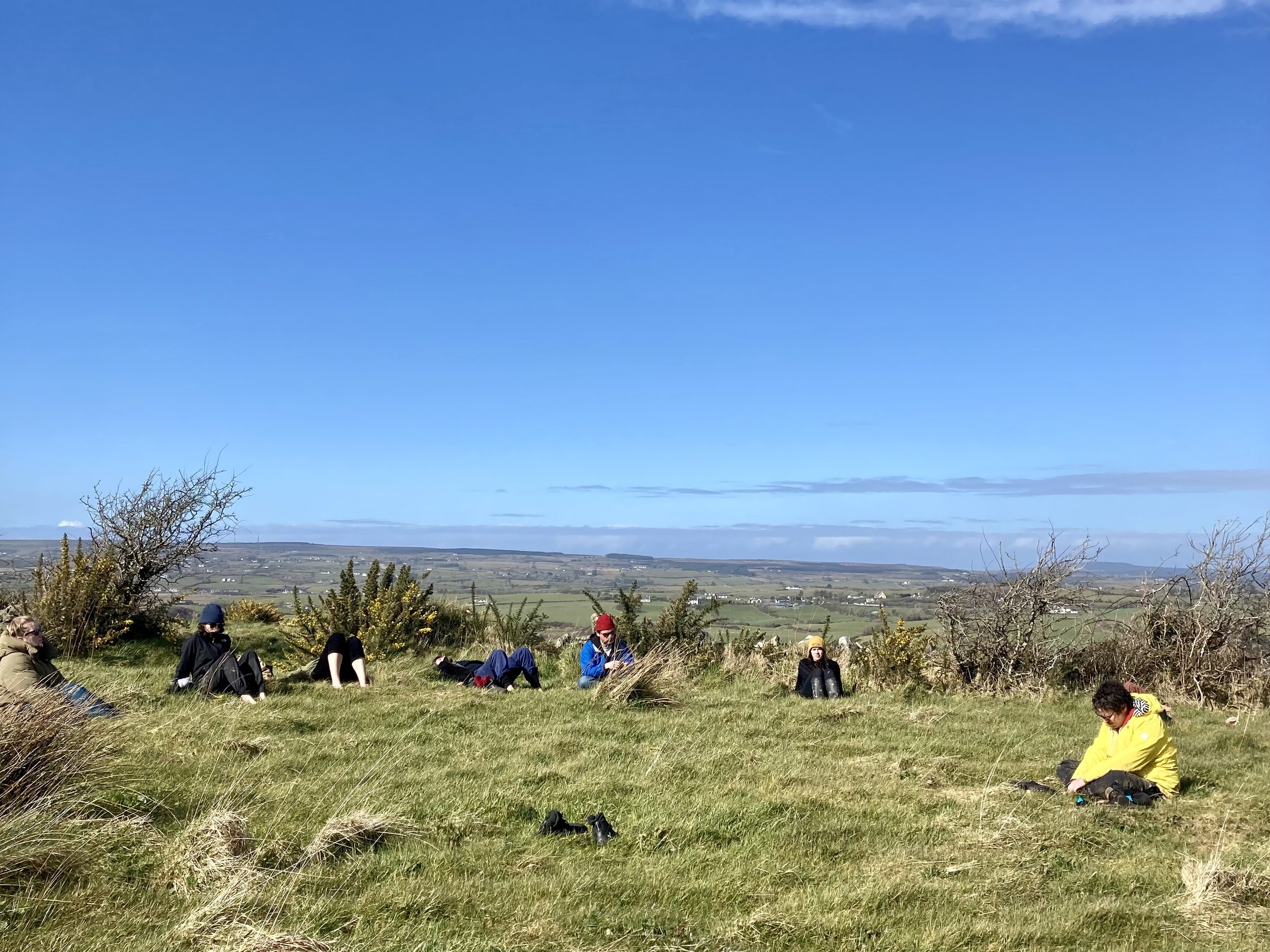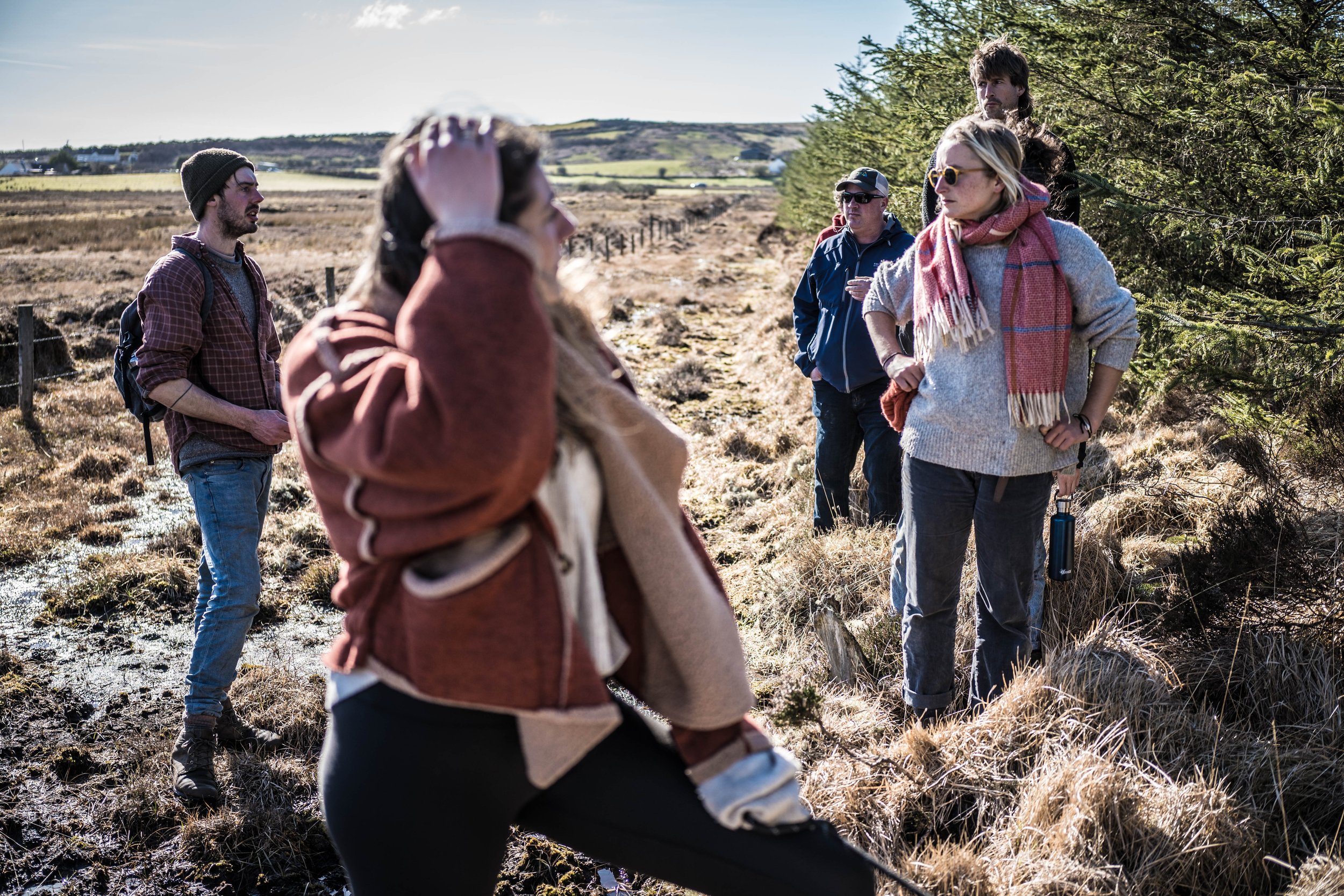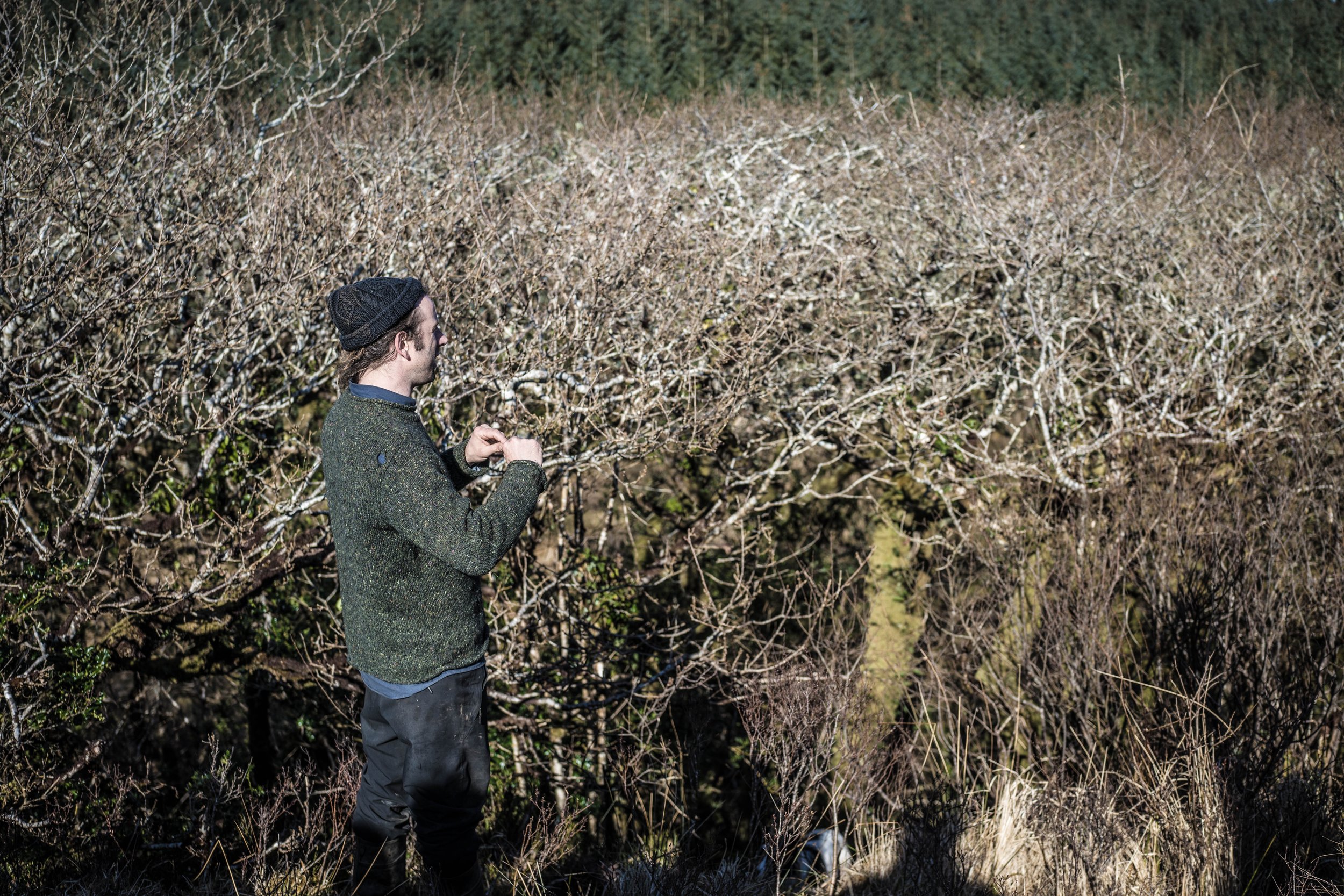Spring Volunteer Retreat Week, 2022
Earlier this Spring, March 14 - 21, Hometree hosted the Spring Volunteer Retreat Week. This week was a lovely example that showed the dedication of Irish people to engage and learn about the environment and how to protect and regenerate it. Volunteers and Hometree staff met on Monday morning; we had some time to get to know each other, learn about why we are all there and what we hoped to get out of the week.
The purpose of the Spring Volunteer Retreat Week was to find a way to bring people into the fold of Hometree in a physical way, to get hands on experience but also have time with the staff and each other. It has been said we know exactly what we need to do to protect the environment, but for some reasons it is not happening. At Hometree we want to un-block any obstacle that gets in the way; be it access to land or needing a little confidence boost.
During this week volunteers got a chance to learn on the field alongside the whole Hometree team. They planted trees on the local farmlands with both co-founders, Micth and Matt. Learnt what an ecologist does on the field with Meadbh. Enjoyed and reaped the benefits of the Forest Therapy with Baiba. And gained knowledge how Ray, engagement and education officer, finds and locates the old growth forests of Ireland.
Hometree’s ecologist Meadhbh Costigan gave the volunteers an insight of what an ecologist does in the field. To do that they went to Illaun Farm-Forest spruce plantation. Project works here are generously supported by the Department of Agriculture and the European Innovation Partnership. Hometree’s work there, and in the wider Miltown-Malbay area, is to improve on-farm biodiversity through innovation and collaboration with the local community.
We used a tree guide and drew attention to the identifiable characteristics of sitka spruce. Together (unsuccessfully) we searched for native herbaceous species on the forest floor. One member of the group made the observation that the biodiversity is located in the ditches.
We identified a variety of native forest species that have survived in the ditches for many decades, if not hundreds of years. Light is the major limiting factor to the growth of native biodiversity in spruce plantations. Meadhbh spoke about continuous cover forestry as a method to open up the canopy while retaining the forest structure. These changes will encourage the biodiversity existing at the periphery of the plantation right into the heart of the forest.
The take home message was - “diversity is in our ditches”.
One of the participants of the Spring Volunteer Retreat, Rory, wrote about his experience and what he gained from this week.
“The Spring Volunteer Retreat Week was everything you could want in a week. But it was still a little spooky when we realised halfway through that seemingly none of us could recall how we’d heard of Hometree or the retreat. Had we been beguiled by some magic of Hometree’s founders Matt and Mitch? If so, the magic worked. In the St Patrick’s Day week in March, we planted nearly 6000 native trees, strangers made friends and we had good fun while we were at it. The weather was a lot better than expected too!
When we arrived at Hometree HQ near Ennistymon, Matt asked us why we had come. Many people mentioned the sense that so much had been lost by the cutting down of old-growth forests. A driving inspiration was the picture of people deep in future being able to be in nature, appreciating it, as well as creating a home for animal life.
Those are all great ideas. What is so valuable about Hometree is that it is an initiative, already in existence, which, in the most welcoming way, allowed us to do something, to actually take some real action towards a more peaceful, more generous, more richly creative future. The practical detail here is that we planted at mid-Clare farms taking part in the Farm-Forest Alliance Project. Hometree had invited farmers in the area to give space on their land for permanent woodland, generally next to walls or hawthorn bushes that are already there between fields. We planted spaces six metres deep here, which – crucially – in the long run will have the right depth and density to provide a “corridor” for wildlife, like birds and squirrels.
6000 trees planted is a lot, but it didn’t feel like it. Planting the saplings each morning was relaxed, joyful, simple. On the first day, Mitch had showed us how to do it. After closing up the soil around the mighty-oak-to-be, he said “Good luck little fella”. As I got better and quicker at planting, I did remember to wish them the best too. It was surprising both to see much ground we covered each morning, but also how slight and delicate the saplings are at this early stage: difficult to see at a distance. You only need to look at the trees planted at Hometree HQ, though, to see how surely they will grow.
Special thanks are due to the dogs with us during the week for always being willing to chase and retrieve a thrown stick from the farmers’ fields!
We had a substantial lunch each day after getting back from the farms. Cian and Olivia, our first volunteer cooks, set a high standard with their tomato soup, which ensured the food was great throughout the week.
Hometree takes its task of educating people about the natural environment seriously. But our afternoons learning in the open air were never stuffy.
Visiting the Illaun sitka spruce plantation, you sense the care and thoughtfulness of Hometree’s biologist, Meadhbh, and the rest of the team, as they meet the opportunities brought by a forest that has already been growing for thirty years and might under different circumstances have been cut down. Opportunities such as using the spruce as protection against West Coast winds for tender broadleaf saplings, or introducing bluebells that would take long years to colonise new woodland.
As we visited Caherkinallia, it was inspiring to hear about Ray the conservationist finding first one hidden old-growth forest, and seeing another in the distance, and so on. We hear about only 1% of Ireland being covered in mature native forestry, and it can seem a surprise that it’s even that much really. But that’s because so much of it is hidden. It was great to have a guide that day.
Baiba guiding us through forest-bathing was tantalising. It revealed the restorative effect of letting nature in with all the five senses and with the heart. All I can say is we need more of it.
In the evenings we went to Lahinch and admired the waves. We stood and chatted on the Hometree HQ hillock as the sun went down and simultaneously the moon peeked past the clouds. We were so privileged to have Órla Kearney as a yoga teacher during the week. A good gang of us took in the Burren on St Patrick’s Day. All so beautiful. I’m bound to report that we did actually wind up in a few Ennistymon pubs over the course of the week. (I know, how did that happen?) Ennistymon is a beautiful town itself, by the way: the waterfalls are only the most famous expression of that.
The trees planted will live longest from that happy March week, but the memories are definitely an inspiring second place.”
The Hometree team would like to say a massive thank you to each and every participant. It was an honour to meet you all, and a wonderful experience altogether. Our next volunteer week will be in Autumn.
